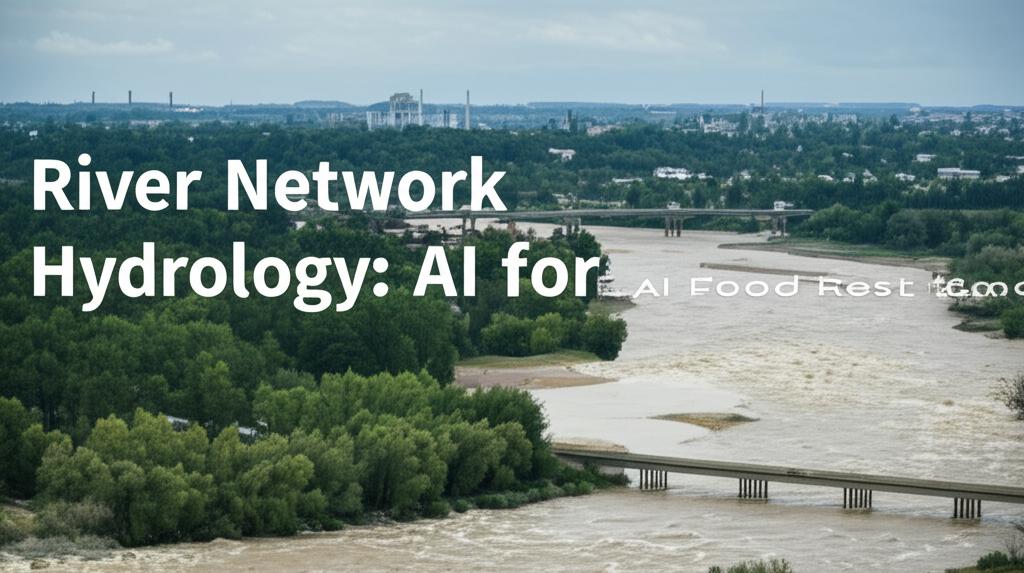Artificial intelligence (AI) is increasingly vital in understanding and managing river network hydrology to build resilience against floods. As climate change intensifies and alters weather patterns, the frequency and severity of flood events are rising globally, necessitating advanced tools for prediction, mitigation, and response. AI offers a paradigm shift, moving towards more intelligent, adaptive, and proactive flood risk management.
Recent advancements highlight AI's capability to process vast and diverse datasets—from satellite imagery and weather patterns to sensor networks and social media feeds. This allows for a holistic and granular view of flood risks, enabling the development of sophisticated flood forecasting models and optimized early warning systems. Machine learning (ML) algorithms, a subset of AI, are pivotal in this. Deep learning techniques like Long Short-Term Memory (LSTM) networks and Convolutional Neural Networks (CNNs) are being effectively used to model the complex, non-linear relationships between rainfall and runoff, significantly improving the accuracy of streamflow predictions and flood forecasts, especially for extreme events.
AI-powered systems are enhancing real-time situational awareness during flood events. For instance, AI can analyze data from Internet of Things (IoT) sensors deployed in rivers and drainage systems to monitor water levels and flow rates, triggering immediate alerts or automated responses like activating pumps. AI algorithms also contribute to optimizing the design and operation of flood mitigation infrastructure, such as smart drainage systems, by analyzing historical data, urban topography, and drainage network characteristics to identify vulnerable areas and inform better infrastructure placement and control.
Furthermore, AI plays a crucial role in developing high-resolution flood risk maps. These maps are invaluable for urban planning, allowing for more informed land-use zoning and the design of resilient urban infrastructure. AI-driven simulations can assess the flood resilience of different development scenarios, guiding sustainable urban growth. The integration of AI with geographic information systems (GIS) and remote sensing data further refines flood mapping and monitoring capabilities.
A significant development is the use of AI to improve forecasting in regions with scarce ground-based data. Global AI-based flood forecasting models, trained on worldwide data sources including satellite observations, are now providing reliable information in areas that previously lacked robust local monitoring. Platforms are emerging that offer these forecasts freely to vulnerable communities, covering millions of people globally. Some models now aim to provide accurate riverine flood information up to seven days in advance.
Recent research also focuses on leveraging the topological information of river networks within AI models. Graph Neural Networks (GNNs) are being explored and refined to better utilize the structure of river networks, which can improve the prediction of extreme hydrological events by capturing interactions between distant points in the network. Innovations in this area aim to accelerate flood warnings significantly.
The development of comprehensive global river network datasets, created using high-resolution satellite imagery and advanced elevation data, is also supporting the advancement of AI models for flooding, water quality, and habitat conservation. These detailed maps capture the complexity of river systems, including branching rivers and canals, providing a more complete view of water movement essential for accurate flood modeling.
Despite the progress, challenges remain. Data scarcity and bias, particularly in developing regions, need to be addressed. Ensuring the quality and interpretability of AI models, as well as their effective communication to non-technical users, are also crucial hurdles. The computational intensity of handling large datasets and complex models requires efficient frameworks and tools.
Looking ahead, the integration of AI into broader climate change adaptation and mitigation strategies is essential. This includes using AI to refine flood risk projections under various climate scenarios, develop climate-resilient infrastructure, and support nature-based solutions for flood mitigation. The continued development of hybrid models that combine data-driven AI insights with established hydrological principles is also a promising direction. The goal is to create more resilient communities and ecosystems capable of withstanding the escalating challenges posed by floods in an era of increasing climate uncertainty.

